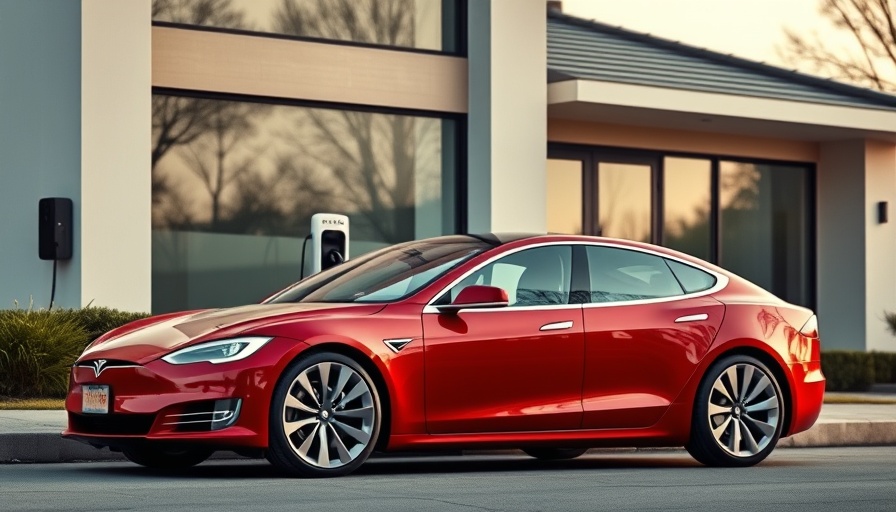
Unveiling the Charm of the 1969 Pontiac Grand Prix SJ
In the world of classic cars, few vehicles ignite passion quite like the 1969 Pontiac Grand Prix SJ. As showcased in Jay Leno's Garage, this exceptional automobile offers not only a glimpse into automotive history but also serves as a remarkable testament to the design and engineering of its time. The Grand Prix SJ stands out with its powerful V8 engine and stylish, coupé-like profile, merging performance with elegance in a way that continues to captivate enthusiasts today.
In 'Driving a "Unicorn": 1969 Pontiac Grand Prix SJ 4-Speed | Jay Leno's Garage', the video highlights the beauty and performance of this classic car, leading us to delve into essential maintenance tips for vintage automobiles.
The Allure of Vintage Performance
This vintage automobile, with its 4-speed manual transmission, represents a bygone era when drivers cherished the tactile experience of shifting gears. The roar of the engine paired with the smooth handling commands attention, making it more than just a mode of transport—it's an experience. This car is often regarded as a 'unicorn' among collectors, blending classic style with performance features that appeal to a modern audience.
Understanding the Importance of Car Maintenance
As thrilling as driving a classic car can be, particularly one like the Grand Prix, it’s vital for owners to engage in proper car maintenance to preserve such a magnificent vehicle. Classic cars can require more careful attention than modern ones, given their unique components and designs. Understanding how to maintain a car, especially a vintage model, is crucial for ensuring longevity and performance.
A Comprehensive Car Maintenance Checklist
For those considering owning a classic vehicle or wanting to preserve their current ones, here’s a basic car maintenance checklist:
- Regular Oil Changes: This is paramount; clean oil ensures the engine runs smoothly.
- Fluid Checks: Regularly checking fluids like brake fluid, coolant, and transmission fluid can prevent major issues.
- Tire Maintenance: Rotating tires every 5,000 to 7,000 miles is crucial for even wear.
- Brake Maintenance: Keep an eye on the condition of brake pads and rotors, which affect safety.
- Air Filter Replacement: Changing your air filter can improve fuel efficiency and performance.
Engaging in DIY Car Repair
For car enthusiasts, DIY repairs not only save money but also build a stronger connection with the vehicle. Simple tasks like changing oil or replacing air filters can be done at home. There are numerous resources available, including online videos and car care apps, that guide owners through the process step-by-step. Moreover, maintaining knowledge on how to inspect belts and hoses or perform tasks like coolant system maintenance can empower car owners and lead to significant savings.
Adapting to Modern Best Practices
The beauty of owning a classic car lies in its nostalgic charm, but adapting some modern maintenance practices can greatly benefit these vehicles. For example, utilizing the latest diagnostic tools can provide insights often overlooked with traditional methods. Additionally, keeping an auto maintenance schedule, even for vintage cars, ensures that any anomalies or needs are addressed promptly—preventing potential setbacks on the road.
Fueling the Passion for Classics
Owning and maintaining a classic car like the 1969 Pontiac Grand Prix SJ goes beyond practicality; it's about nurturing a passion. As we reflect on this impressive vehicle and its significance in automotive history, it's essential not just to revel in its beauty and performance but also commit to responsible ownership through proper maintenance. For those dedicated to preserving these 'unicorns', the rewards are numerous—both in the joy of driving and the preservation of history.
Ultimately, classic cars are more than just machines; they are pieces of art that require care and dedication. By following a vehicle maintenance guide, enthusiasts can ensure that their classic cars remain not only joyful to drive but also valuable over time. Whether you're just starting your journey with classic automobiles or an experienced collector, joining the community of car care is rewarding and enriching.
 Add Row
Add Row  Add
Add 




Write A Comment